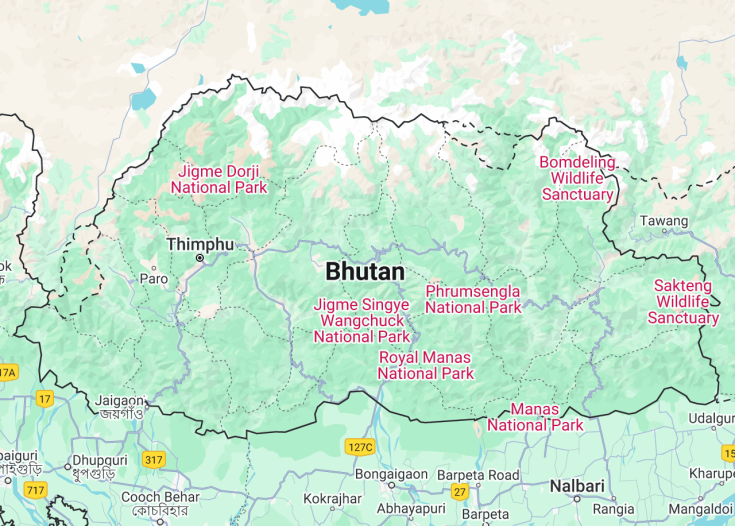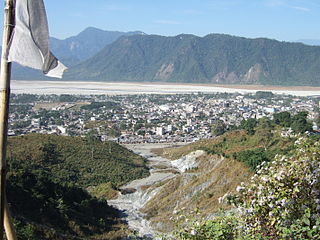Bhutan, known as the “Land of the Thunder Dragon”, is a captivating destination nestled in the Himalayas. With its majestic mountains, serene monasteries, and vibrant culture, Bhutan offers a truly unique experience for travelers. Immerse yourself in the country’s rich Buddhist heritage as you explore monasteries and temples, or embark on a thrilling trek in the pristine landscapes. Bhutan’s commitment to preserving its environment and culture is commendable, making it an ideal destination for those seeking an authentic and sustainable travel experience.
Experience the breathtaking beauty of Bhutan by embarking on a trek to the iconic Tiger’s Nest monastery, perched on a cliff 900 meters above the Paro Valley.
Indulge in Bhutan’s unique blend of tradition and modernity by attending a traditional Bhutanese festival, where you can witness colorful masked dances and immerse yourself in the local culture.
Top destinations in Bhutan
Bhutan: A Himalayan Kingdom of Happiness
| Capital | Thimphu |
| Time in Bhutan | GMT+6 |
| Language spoken | Dzongkha |
| Population | 770,000 (Source: World Bank, 2022) |
| Religion | Buddhism (74.7%) Hinduism (22.6%) Other religions (2.7%) |
| Currency | Ngultrum(₽, BTN) |
| Airports | Paro Airport Gelephu Airport Bathpalathang Airport |
Bhutan, often referred to as the “Land of the Thunder Dragon”, is a mesmerizing kingdom nestled in the Eastern Himalayas. Boasting a rich tapestry of history and culture, this nation has managed to preserve its ancient traditions while modernizing its infrastructure and governance. An epitome of sustainable tourism, Bhutan has become synonymous with happiness, given its unique philosophy of Gross National Happiness (GNH) that prioritizes the well-being of its citizens over mere economic growth. Rooted deeply in Buddhist principles, the nation’s history is replete with fascinating tales of saints, kings, and mystical creatures, each adding a unique layer to its cultural mosaic.
Where is Bhutan located?
Bhutan is a landlocked nation situated in South Asia, nestled between China to the north and India to the south, amidst the towering peaks of the Eastern Himalayas.
What is Bhutan famous for?
Bhutan is renowned for its majestic monasteries, traditional festivals, and the pioneering Gross National Happiness index. Its untouched landscapes and commitment to sustainability make it a unique travel destination.
History
Early Inhabitants and the Arrival of Buddhism (600-1600)
The early history of Bhutan remains shrouded in mystery, but it is believed that the region was inhabited as early as 2000 BC by indigenous tribes. The most significant turn in its history occurred in the 7th century when Guru Rinpoche (Padmasambhava) introduced Buddhism, which would later become the state religion and a cornerstone of Bhutanese identity.
Formation of the Bhutanese State (1600s – 1700s)
The 17th century marked the emergence of Bhutan as a unified nation under the leadership of Zhabdrung Ngawang Namgyal, who fled religious persecution in Tibet. He established a theocratic government, built a series of dzongs (fortresses) which serve both as religious and administrative centers, and laid down the foundations for the dual system of governance, combining spiritual and temporal rule.
British Influence and Treaties (1800s – Early 1900s)
The 19th century saw a series of invasions from neighboring British India and Tibet. By the end of the century, Bhutan had become a buffer state between British India and China. The Treaty of Punakha in 1910 with British India affirmed Bhutan’s sovereignty but gave the British control over its foreign relations.
Monarchy and Modernization (1907 – Late 20th Century)
In 1907, Bhutan transitioned from a dual governance system to an absolute monarchy with Ugyen Wangchuck being crowned as the first Druk Gyalpo (Dragon King). This change brought stability to the nation after a period of political fragmentation. His successors continued to forge close ties with India after it gained independence in 1947. The third king, Jigme Dorji Wangchuck (reigned from 1952-1972), initiated modernization programs, opening Bhutan to the outside world, while cautiously preserving its unique culture and traditions. The country saw the establishment of modern institutions, infrastructural development, and the promotion of Bhutanese identity.
Democratization and Contemporary Era (Late 20th Century – Present)
The later decades of the 20th century and the early 21st century witnessed significant political reforms. The fourth king, Jigme Singye Wangchuck, introduced the concept of Gross National Happiness (GNH) as a measure of development, emphasizing holistic well-being over mere economic growth. In a historic move, he initiated the drafting of Bhutan’s first constitution in 2001, which was eventually adopted in 2008. The same year saw the transition of Bhutan from an absolute monarchy to a constitutional monarchy, with the first democratic elections taking place. Today, Bhutan stands as a testament to a nation that has melded tradition and modernity, ensuring the happiness and well-being of its citizens while preserving its rich cultural heritage.
Visit Bhutan
What to see and do in Bhutan
When visiting Bhutan, there are a plethora of cultural and natural attractions to explore. Some must-see destinations include:
- The Tiger’s Nest Monastery (Paro Taktsang): A sacred site perched on a cliffside, offering breathtaking views and a glimpse into Bhutan’s religious heritage.
- Punakha Dzong: A majestic fortress overlooking the confluence of two rivers, known for its intricate architecture and historical significance.
- Bhutanese Festivals: Experience the vibrant and colorful festivals, such as the Paro Tshechu and Thimphu Tshechu, showcasing traditional dances, music, and costumes.
- Hiking in the Himalayas: Embark on scenic treks through the pristine landscapes of Bhutan, with options ranging from gentle walks to challenging mountain expeditions.
- Exploring Bhutanese Cuisine: Indulge in the unique flavors of Bhutan, with dishes like Ema Datshi (chili and cheese stew) and momos (dumplings) being local favorites.
Events in Bhutan
Bhutan hosts a variety of events and festivals throughout the year, offering a glimpse into the country’s rich cultural traditions. The timing of these events varies, but some popular ones include:
- Paro Tshechu: Held in the spring, this festival showcases masked dances and religious performances.
- Thimphu Tshechu: Taking place in the fall, this festival features colorful masked dances and traditional music.
- Haa Summer Festival: Celebrated in July, this festival highlights the unique culture and traditions of the Haa valley.
- Black-Necked Crane Festival: Held in November, this festival pays homage to the endangered black-necked cranes that migrate to Bhutan.
Best time to visit Bhutan
The best time to visit Bhutan is during the spring (March to May) and fall (September to November) seasons. During these months, the weather is generally pleasant, and the skies are clear, offering optimal conditions for trekking and outdoor activities. Additionally, the famous Bhutanese festivals, such as Paro Tshechu and Thimphu Tshechu, are held during these seasons.
Is Bhutan worth visiting?
Bhutan is truly a destination like no other, with its rich cultural heritage, breathtaking landscapes, and unique approach to sustainable development. The country’s emphasis on Gross National Happiness and commitment to preserving its cultural traditions make it a compelling and enriching place to visit. From exploring ancient monasteries to hiking through pristine mountains, Bhutan offers a range of experiences that immerse travelers in its captivating charm. While the country’s visa policy and tourism regulations may require some extra planning, the rewards of visiting Bhutan are well worth the effort.












